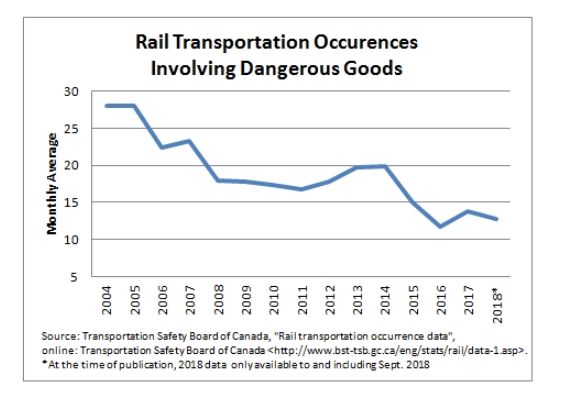Canadian crude exports by rail have seen a sharp increase since 2017 and are at an all-time high (see table below). This steady increase has been driven by a lack of pipeline infrastructure and a shortage in qualified drivers in the trucking industry.

Since 2015 and the introduction of various pieces of legislation1 in response to the Lac-Mégantic train derailment, the number of rail occurrences involving dangerous goods has seen a significant decrease (see table below), notwithstanding the significant increase in transportation of crude oil products by rail over the same period.

Notwithstanding the downward trend in occurrences involving dangerous goods, the increase in transportation of crude oil products by rail has resulted in renewed safety concerns. In response, Canada's Minister of Transport has issued a Ministerial Order aimed at addressing rail fatigue. The Ministerial Order requires railway companies to update the Work/Rest Rules for Railway Operating Employees,2 which were first put into place in 2002 and have received only minor revisions since then. The updated rules must be submitted to the Minister of Transport for approval by May 19, 2019 and must address the following:
- Length of a duty period;
- Split duty (split shifts);
- Minimum rest period;
- Cumulative time on duty;
- Minimum time free from work;
- Advance notice of work schedules; and
- Fatigue management plans.
Footnotes
1 See, for example, the Safe and Accountable Rail Act, S.C. 2015, c. 31 and the Regulations Amending the Transportation of Dangerous Goods Regulations (TC 117 Tank Cars), S.O.R./2015-100 and our e-LERTs on the impacts of these legislative changes from March 2015, May 2015, August 2016 and September 2017.
2 Work/Rest Rules for Railway Operating Employees, Transport Canada TC O 0-140 (February 2011).
The content of this article is intended to provide a general guide to the subject matter. Specialist advice should be sought about your specific circumstances.

